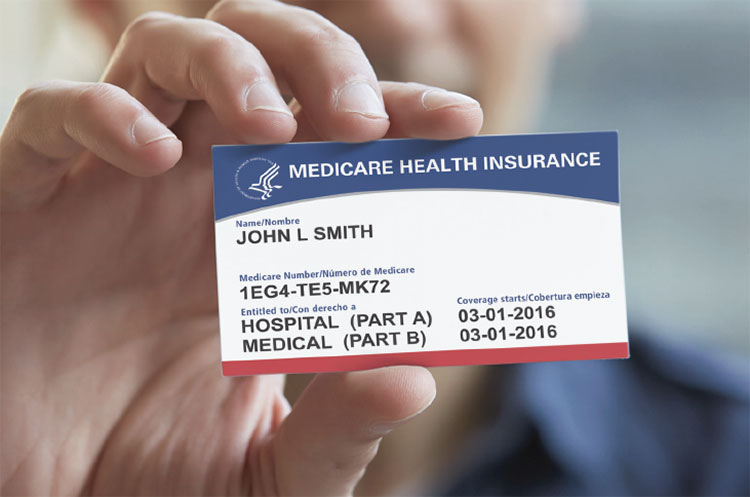We help Seniors with Medicare Enrollment, Medicare Supplement Insurance, Medicare Advantage and Prescriptions Drug Plans. We service clients in Grand Junction, Montrose, Delta and the Western Slope of Colorado. We also serve Alaska, Arizona, Illinois, Kansas, Michigan, Nebraska, New Mexico, Ohio, South Carolina, South Dakota, Utah, and Washington.
We can help you get the medicare coverage that works best and is most affordable for you. We can sign you up for Medicare, explain all of the parts of Medicare: Part A, B, C, and D and provide you with the Medicare Supplement, Medicare Advantage Plans and Prescription Drug plans available to you in your state. We take care of the entire application process for you.
How Does Medicare Work?
Medicare is a federal health insurance program for people 65 and older and others with disabilities. When you turn 65 you become eligible for Original Medicare which is Medicare Parts A and B. Or you can choose a Medicare Advantage Plan or a Medicare Supplement Insurance Policy and Prescription Drug Plan. There are many options and varying price plans.
Medicare Part A covers hospital stays and inpatient care, including:
- Semi-private room and meals
- Skilled nursing services
- Care in special units, such as intensive care
- Drugs, meidal supplies and equipment
- Lab tests and X-rays
- Operating Room and recovery room services
- Some blood transfusions
- Rehabilitation services after a qualified inpatient stay
- Part-time skilled care for the homebound
- Hospice Care
What providers can you use?
You can choose any qualified provider enrolled in Medicare that is accepting patients.
Costs
Premium. There is no cost if you have made contributions to Social Security for at least 10 years. If not you will pay a monthly premium.
Deductible. For each benefit period, you have to pay a Part A deductible before Part A starts to pay a share of your costs. A benefit period begins the day you are admitted to the hsopital and ends when your’ve been out of the hospital 60 days in a row.
You pay only one deductible each benefit period, even if you had more than one hospital stay. For 2025, the Part A deductible is $1,676.00
Copay
There is no copay for hospital stays up to 60 days in one benefit period. Copays for a longer stay may include:
- $335 per day for days 61-90
- $670 per day for up to 60 lifetime reserve days
Copays for skilled nursing facility stays are:
- $0 for days 1-20
- $167.50 per day for days 21-100
Lifetime reserve days may not be used to extend coverage in a skilled nursing facility.
Coinsurance.
Home hospice patients may pay a small conisurance amount for inpatient respite care so the patient’s caregiver can have time off.
Medicare Part B covers doctor visits and outpatient care, including:
- Annual wellness visit and preventive services, like flu shots
- Lab tests and x-rays
- Physical therapy, occupational therapy and speech-language pathology services
- Diabetes screenings and certain diabetes supplies
- Mental Health care
- Durable medical equipment for use at home, like wheelcairs
- Ambulatorey surgery center serivces
- Ambuland and emergency room services
- Part-time skilled care for the homebound
What providers can I see?
You can choose any qualified provider enrolled in Medicare that is accepting Medicare patients.
What is not covered?
Most prescription drugs are not covered buy Part B. Routine dental, vision and hearing services are also not included. Additionally, Part B doesn’t cover home health care or care outside the United States.
Costs
Premium. Part B charges a monthly premium. Most people pay the set standard premium. The standard monthly Part B premium in 2025 is $257.00
Part B premium amounts are adjusted based on income. People with high incomes pay more on a scale depending on income.
Deductible. You have to pay a deductible before Part B starts paying a share of your costs. In 2025, the deductible is $257 for the year.
Coinsurance. You generally pay 20% of the Medicare-approved amount for the covered services you use. Medicare pays the remaining 80%.
Medicare Advantage (Part C)
These plans are like HMOs or PPOs, and typically include Part A, B, and D. They are offered by private insurance companies and replace Original Medicare Parts A and B with their own. Most plans offer prescription drug coverage (Part D), coverage for routine dental, vision and hearing, eyewear, hearing aides and fitness programs.
What providers can I see?
You may be required to use network doctors and hospitals in a specific geographic area. However all plans offer nationwide coverage for ER, urgent care and renal dialysis. Some plans require a primary care provider who coordinates your care. Other Fee-For-Service Medicare Advantage plans allow you to get care from any Medcare-eligible provider who accepts the terms, conditions and payment rates of the plan. These plans do not offer coordinated care. Here are the different types of Medicare Advanage Plans:
- Health Maintenance Organization (HMO)
- Preferred Provider Organization (PPO)
- Private Fee-for-Service (PFFS)
- Special Needs Plans (SNPs)
- HMO Point-of-Service (HMOPOS) plans—These are HMO plans that may allow you to get some services out-of-network for a higher copayment or coinsurance.
Costs
You continue to pay your Part A (if you have one) and Part B premiums. Medicare Advantage Plans usually have additional costs dependimg premiums, deductibles copays, and coinsurance. All Medicare Advantage plans put a cap on your annual out-of-pocket costs. The maximum allowable is $7,550 in 2025. Some plans set lower caps, so check the plan details carefully.
Medicare prescription drug coverage is an optional benefit.
Medicare offers drug coverage to everyone with Medicare. Even if you don’t take prescriptions now, you should consider joining a Medicare drug plan. If you decide not to join a Medicare drug plan when you’re first eligible, and you don’t have other creditable prescription drug coverage or get Extra Help, you’ll likely pay a late enrollment penalty if you join a plan later. Generally, you’ll pay this penalty for as long as you have Medicare prescription drug coverage.
If you want drug coverage you must enroll in a plan. You must have Part A and/or Part B to join a Medicare Prescription Drug Plan. Part D plans are offered by private insurance companies approved by Medicare. Your choices vary depending on where you live. All prescription drug plans must meet the same basic guidelines created the the federal government. But, not all plans are the same and cover different prescriptions.
What pharmacies can I use?
Each prescription drug plan has a network of contracted pharmacies. You must use network pharmacies to get the discounted plan price for your drugs. Plans may define networks by geographic area, such as a state, or allow the use of network pharmacies nationwide.
Costs
Medicare Part D prescription drug plans may include premiums, deductibles, copays or coinsurance. This is true for stand-alone Part D plans and for Medicare Advantage (Part C) plans with built-in drug coverage.
Medigap Programs
Original Medicare (Parts A and B) pay for much, but not all, of the cost for health care services and supplies. Medicare Supplement Insurance policies, sold by private companies, can help pay some of the remaining health care costs, like copayments, coinsurance, and deductibles. Medicare Supplement Insurance policies are also called Medigap policies.
Some Medigap policies also offer coverage for services that Original Medicare doesn’t cover, like medical care when you travel outside the U.S. Generally, Medigap policies don’t cover long-term care (like care in a nursing home), vision or dental care, hearing aids, eyeglasses, or private-duty nursing.
Medigap policies are standardized
Every Medigap policy must follow federal and state laws designed to protect you, and they must be clearly identified as “Medicare Supplement Insurance.” Insurance companies can sell you only a “standardized” policy identified in most states by letters A through D, through G, and K through N. All policies offer the same basic benefits, but some offer additional benefits so you can choose which one meets your needs. In Massachusetts, Minnesota, and Wisconsin, Medigap policies are standardized in a different way.
Many plans are available and vary in cost.


